Costa Rica: Caribbean Mountains to Coast 2025 Trip Report (Oct 1 -12)
Day 1. Hotel Bougainvillea
We gathered late in the afternoon for our first birding as a group, exploring the beautiful gardens of the hotel where we found a good sampling of common Central Valley yard birds including Red-billed Pigeon, White-winged Dove, Clay-colored Thrush, Rufous-collared Sparrow, Lesson’s Motmot, Hoffman’s Woodpecker and the resident Mottled Owl roosting in the dense clump of bamboo.
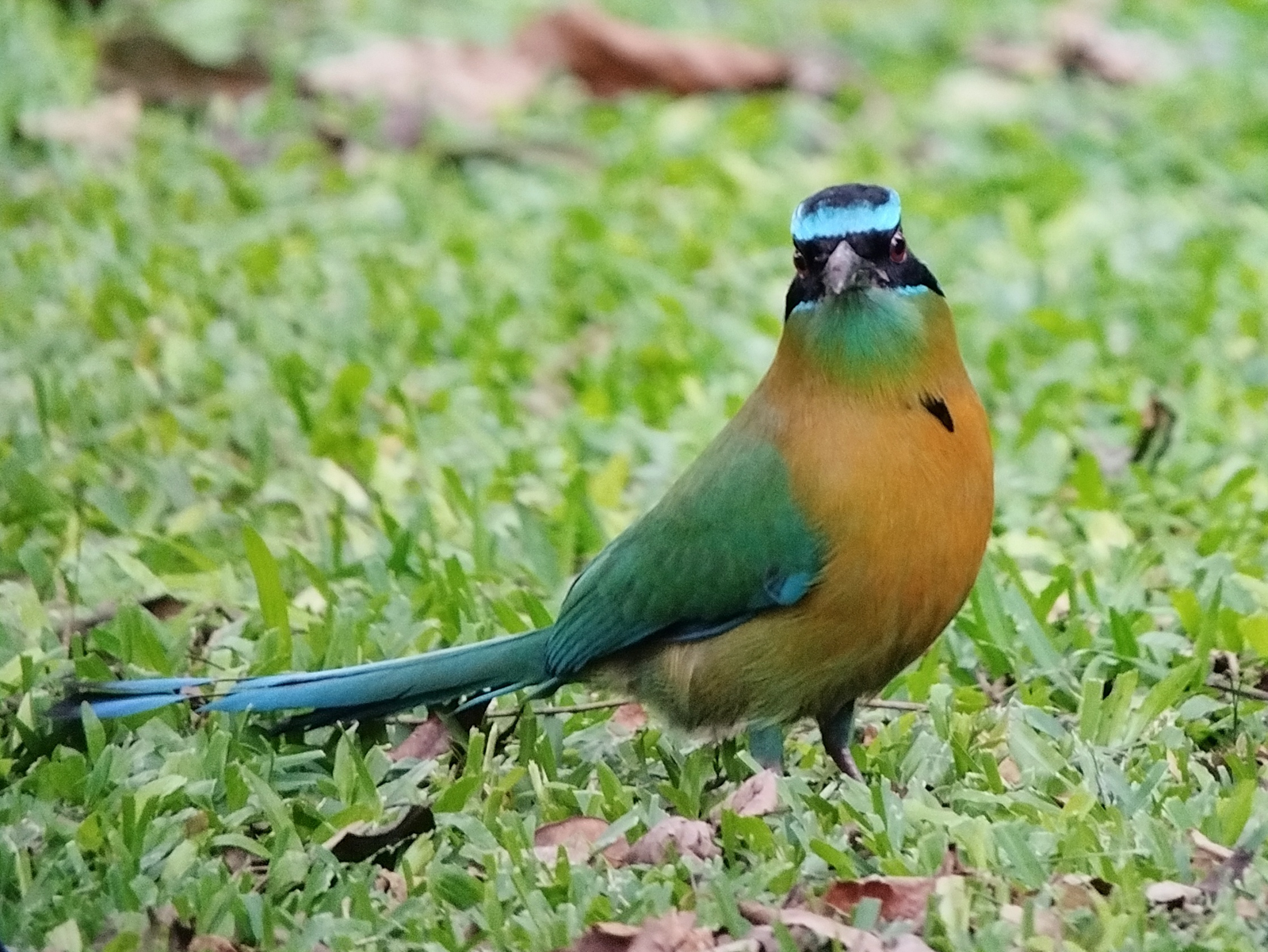
Lesson’s Motmot © Ernesto Carman
Day 2. Santo Domingo, Irazú Volcano, Paraíso and Rinconcito Verde
Before breakfast we met our driver, Ricardo Gomez, and drove five minutes down the road to a coffee farm where we were going to look for one of Costa Rica’s seven endemic birds, the Cabanis’s Ground-Sparrow. It wasn’t long before we got some brief glimpses of this skulky bird lurking in the shadows of the coffee plants, but we kept birding the edges of the coffee farm to improve our views of this beautiful bird, and we were successful as we patiently waited for one to come out in the middle of the road and gave us cracking views! Satisfied, we returned to the hotel for breakfast and packed our bags and off we went.
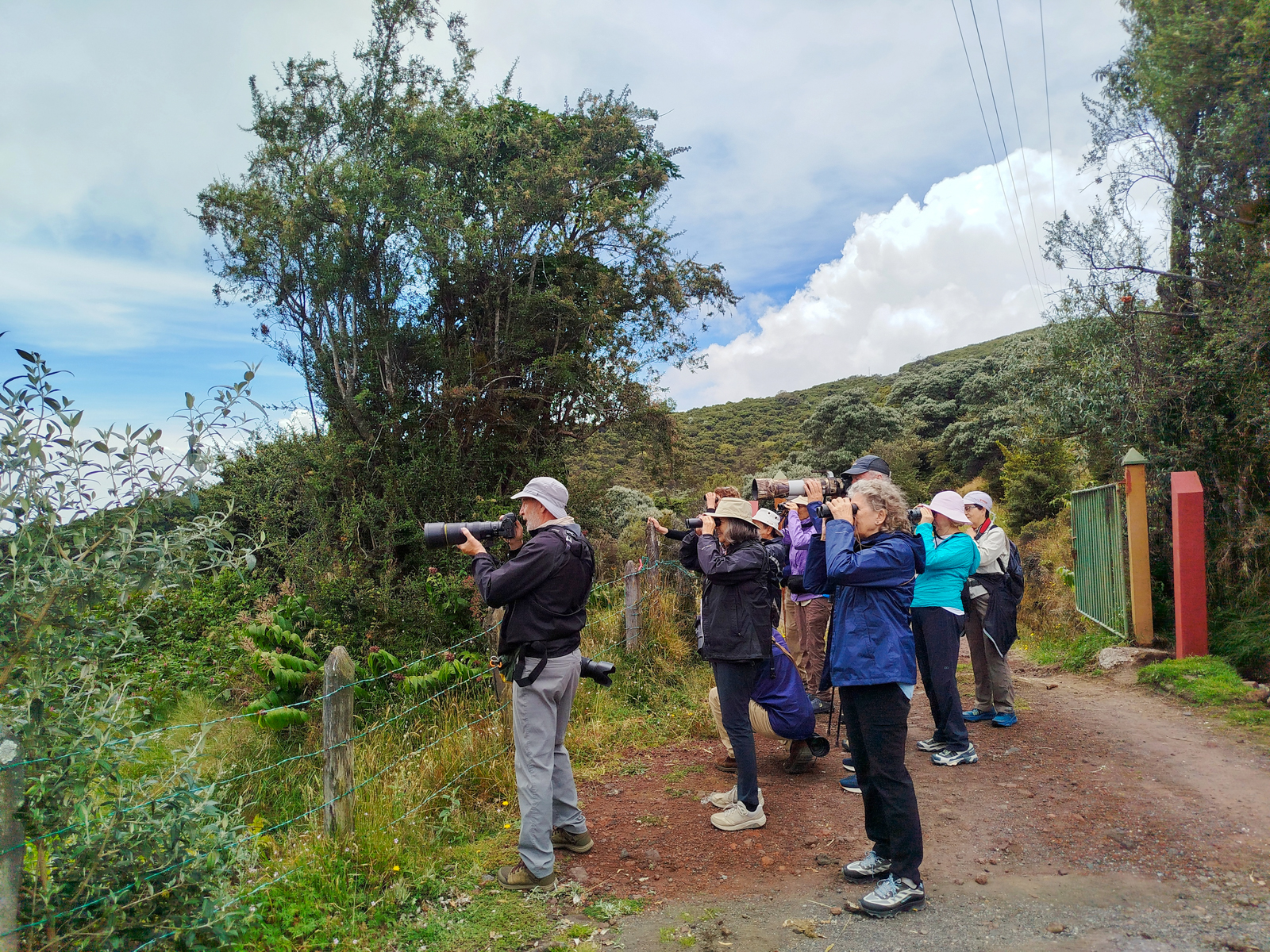
Birding on Irazú © Ernesto Carman
We drove east to Cartago, learning about this city’s importance in Costa Rica’s religious and political history as we went, then worked our way up to Irazú Volcano. Our first stop was in Nochebuena where we birded along the roadside and saw Sooty-capped Chlorospingus, Volcano Hummingbird, Lesser Violetear, Talamanca Hummingbird, Hairy Woodpecker and Slaty Flowerpiercer, but the most exciting moment came when we spotted one of our big targets in the highlands, the magnificent Resplendent Quetzal! We had fantastic views of both male and female as they fed from wild avocados along the roadside.

Resplendent Quetzal © Ernesto Carman
We drove to the top of the mountain and saw Sooty Thrush, Black-billed Nightingale-Thrush and the extremely restricted Volcano Junco. After lunch we drove back down the mountain and stopped at a vervaine hedge near Cartago and saw Scintillant Hummingbird before driving to the town square of the bustling town of Paraíso where we enjoyed fantastic scope views of Crimson-fronted Parakeets and the two species of resident owls: American Barn Owl and Tropical Screech-Owl. We arrived at our hotel and settled in for the next two nights.
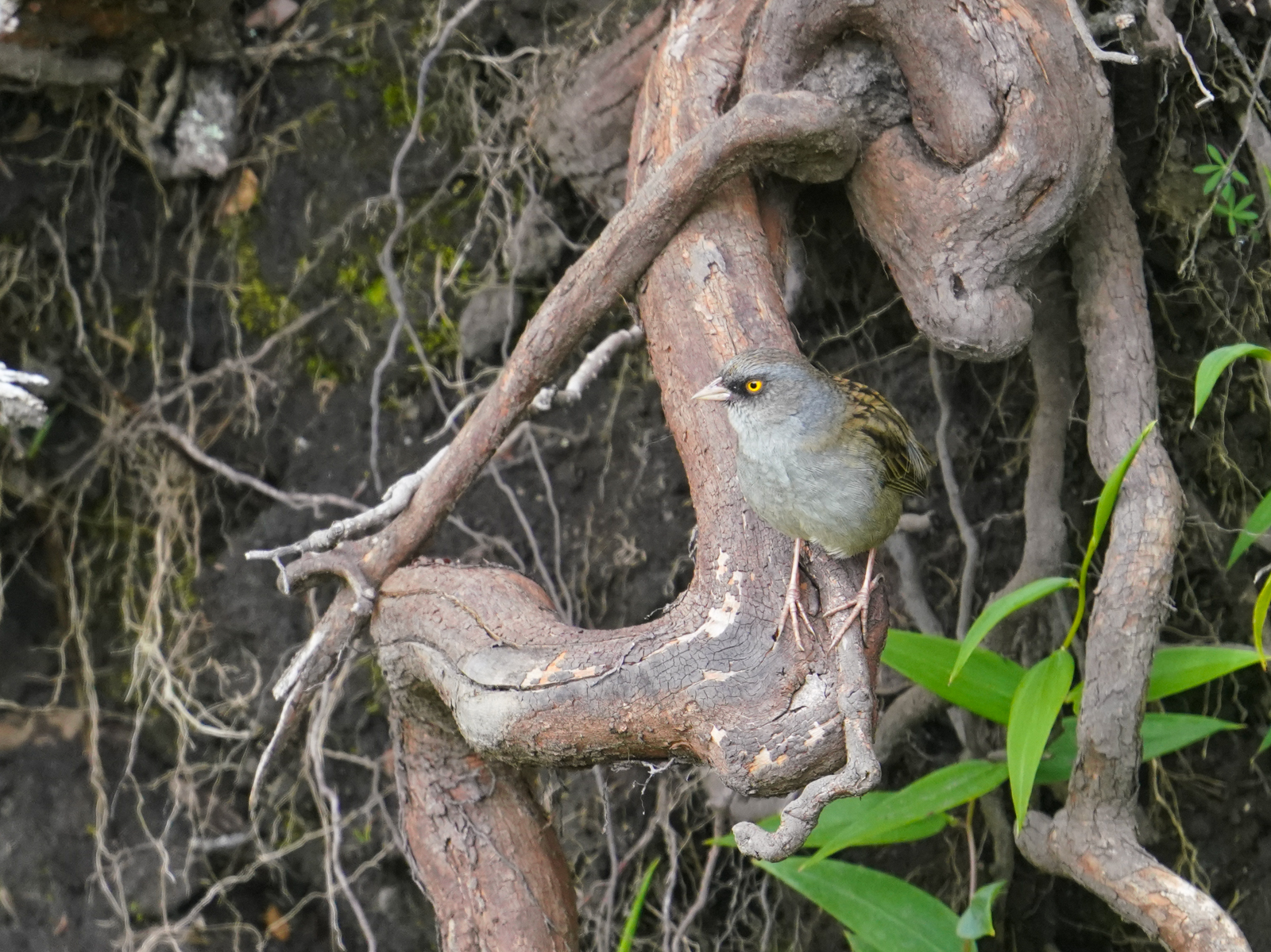
Volcano Junco © Jose Pablo Castillo
Day 3. Río Macho, Café Cristina and Rinconcito Verde
After breakfast we drove up the Reventazón River Valley to the proximity of Tapantí National Park, specifically on a road known as Río Macho. Here we spotted some typical middle elevation species such as Common Chlorospingus, Speckled Tanager, Tawny-capped Euphonia, Red-faced Spinetail, Olive-streaked Flycatcher, Slate-throated Redstart, Collared Trogon, Yellowish Flycatcher, many Swainson’s Thrushes and several species that can be tricky to spot such as Plain Antvireo and Scale-crested Pygmy-Tyrant.
After lunch we visited Café Cristina to learn how Ernesto’s family is producing amazing organic, shadegrown coffee in a way that provides excellent habitat to wildlife at the same time, and this point was driven home in the best of ways as we were received by an incredible mixed species flock where we saw many Chestnut-sided, Tennessee, Blackburnian and Black-and-white Warblers, Red-eyed, Yellow-throated and Yellow-green Vireos, Lesser Greenlet, Yellow-throated Euphonia and Squirrel Cuckoo! After filling our bags with coffee and our list with birds we drove the short distance to our hotel for a siesta and a bit of late afternoon birding from the deck and saw White-tailed Kite, Short-tailed Hawk, Yellow-headed and Crested Caracara, Cabanis’s Wren and Garden Emerald.
Day 4. Ujarrás Valley, Trankigarden, Cariblue
Before breakfast we drove to the nearby Ujarrás Valley and found several of the specialties here including Green Ibis, White-tailed Kite, Roadside Hawk, Southern Lapwing, Dickcissel and a gorgeous female Hook-billed Kite perched atop one of the posts supporting the chayote plantation trellises. We returned to the hotel for breakfast, packed the bus and off we went, working our way down the Reventazón River valley towards Turrialba where we made a slight detour to visit a small family-run project called TrankiGarden. Here we were greeted by David Corrales who took us to two different feeding stations; the first one was a setup near a swampy grassland where he had cleverly designed a spot where he placed rice and earthworms and a pair of White-throated Crakes came out of their usual hiding places, giving us amazing views, and the second feeder setup was a combination of flowers, hummingbird feeders and fruit feeders where we saw Black-cowled Oriole, Ruddy Ground-Dove, Scarlet-rumped Tanager, White-necked Jacobin, Green-breasted Mango, Garden Emerald, Black-crested Coquette, Violet-headed Hummingbird, Green Thorntail and the star of the show, a male Snowcap!
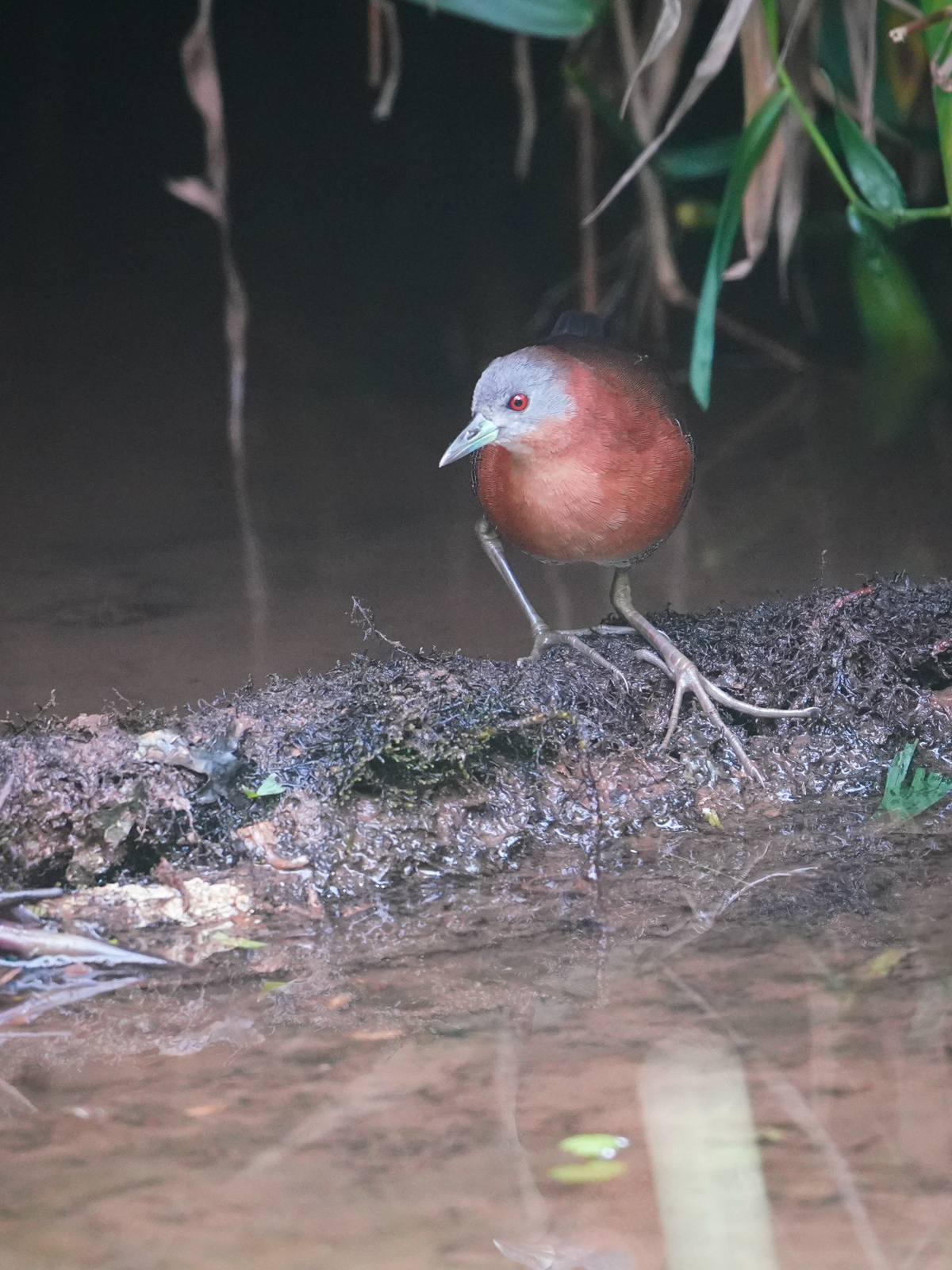
White-throated Crake © Jose Pablo Castillo

Green-breasted Mango © Jose Pablo Castillo
After lunch we continued our way to the south Caribbean corner of Costa Rica which is a true melting pot for culture and wildlife. Although it was raining most of the way we did spot a Hoffmann’s Two-toed Sloth moving relatively quickly along a telephone line.
Day 5. Cariblue and Puerto Viejo
Before breakfast we gathered to bird the hotel grounds and had many new species including, Bay Wren, Long-billed Gnatwren, Tawny-crested Tanager, Blue-chested Hummingbird, Mealy Amazon, Bananaquit and a Merlin perched in a treetop eating a Swainson’s Thrush, as well as 3 different species of Poison Dart Frogs. We also walked out to the beach and saw hundreds of swallows, Dickcissels and Eastern Kingbirds actively migrating, as well as Brown Pelicans, a Whimbrel and a troop of Mantled Howler Monkeys in the trees above us.

Green-and-black Poison Frog © Ernesto Carman
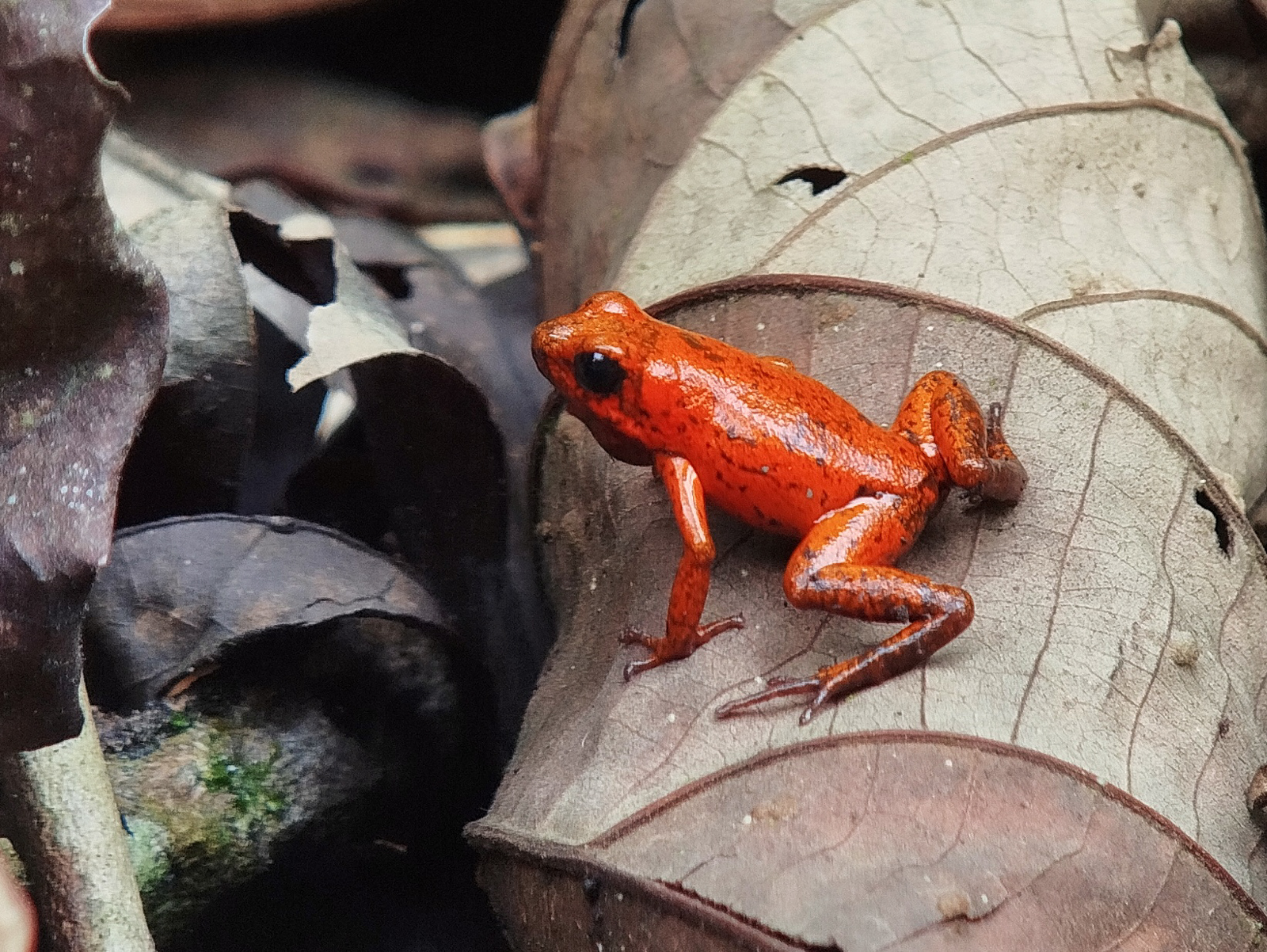
Strawberry Poison Frog © Ernesto Carman
After breakfast we drove to the town of Hone Creek where we stopped on the roadside to get our first experience with raptor migration and we watched as kettle after kettle, groups of Mississippi Kites and Broad-winged Hawks made their way southeast, passing just over our heads in massive flocks!

Broad-winged Hawk and Mississippi Kite migration © Jose Pablo Castillo
We also had two perched Peregrine Falcons, Osprey and a Common Black-Hawk. We then birded a gravel road that leads to the town of Carbón and we found Morelet’s Seedeater, Thick-billed Seed-Finch, Golden-hooded, Plain-colored, Scarlet and Summer Tanagers, Masked and Black-crowned Tityras, White-crowned Parrot, Orange-chinned Parakeet, Long-tailed Tyrant, Cinnamon Becard and Scarlet-rumped Cacique. The day began to warm-up and the bird activity died down a little, but we still found several Caribbean specialties such as Purple-throated Fruitcrow and Black-chested Jay, and we had excellent views of them as well. After lunch and some siesta and beach time we went for a short drive and just before the rain began we found Red-lored Amazon, Yellow-throated Toucan and Collared Aracari.

Purple-throated Fruitcrow © Jose Pablo Castillo
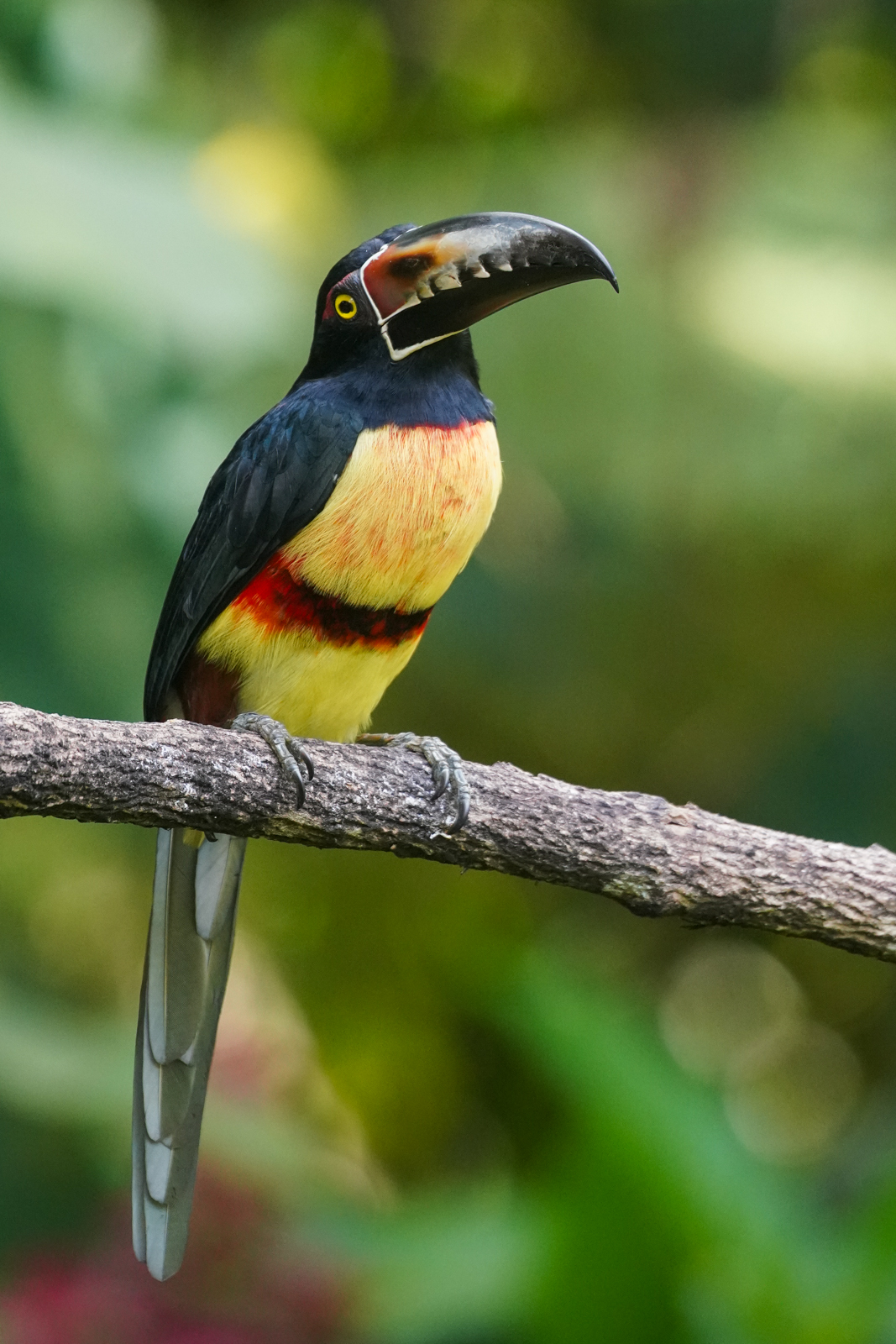
Collared Aracari © Jose Pablo Castillo
Day 6. Cahuita National Park
As we woke to the sound of Howler Monkeys we realized there was also an intense, steady rain coming down upon us so we skipped our prebreakfast walk and met at breakfast. The rain had stopped by the time we set out to Cahuita National Park and began our walk on the boardwalk through a magnificent, seasonally flooded forest with gigantic trees towering 50 meters above us. Although some birds were high up in the canopy, one of the greatest parts of birding in Cahuita are the understory mixed species flocks which gave us great views of species such as Dot-winged and White-flanked Antwren, Checker-throated Stipplethroat, Black-crowned Antshrike, Ruddy-tailed Flycatcher,Chestnut-backed Antbird and several Neotropical migrants including Yellow-bellied Flycatcher, Ovenbird, Northern Waterthrush and Bay-breasted Warbler. We also saw Mantled Howlers and White-faced Capuchin Monkeys, Red-tailed Squirrel, Eyelash palm-pitviper and many damselflies, dragonflies and butterflies. After lunch we checked a small estuary in the village of Cahuita and saw Boat-billed Heron, Snowy Egret, Spotted Sandpiper, Belted and Amazon Kingfishers and a Costa Rican Slider.
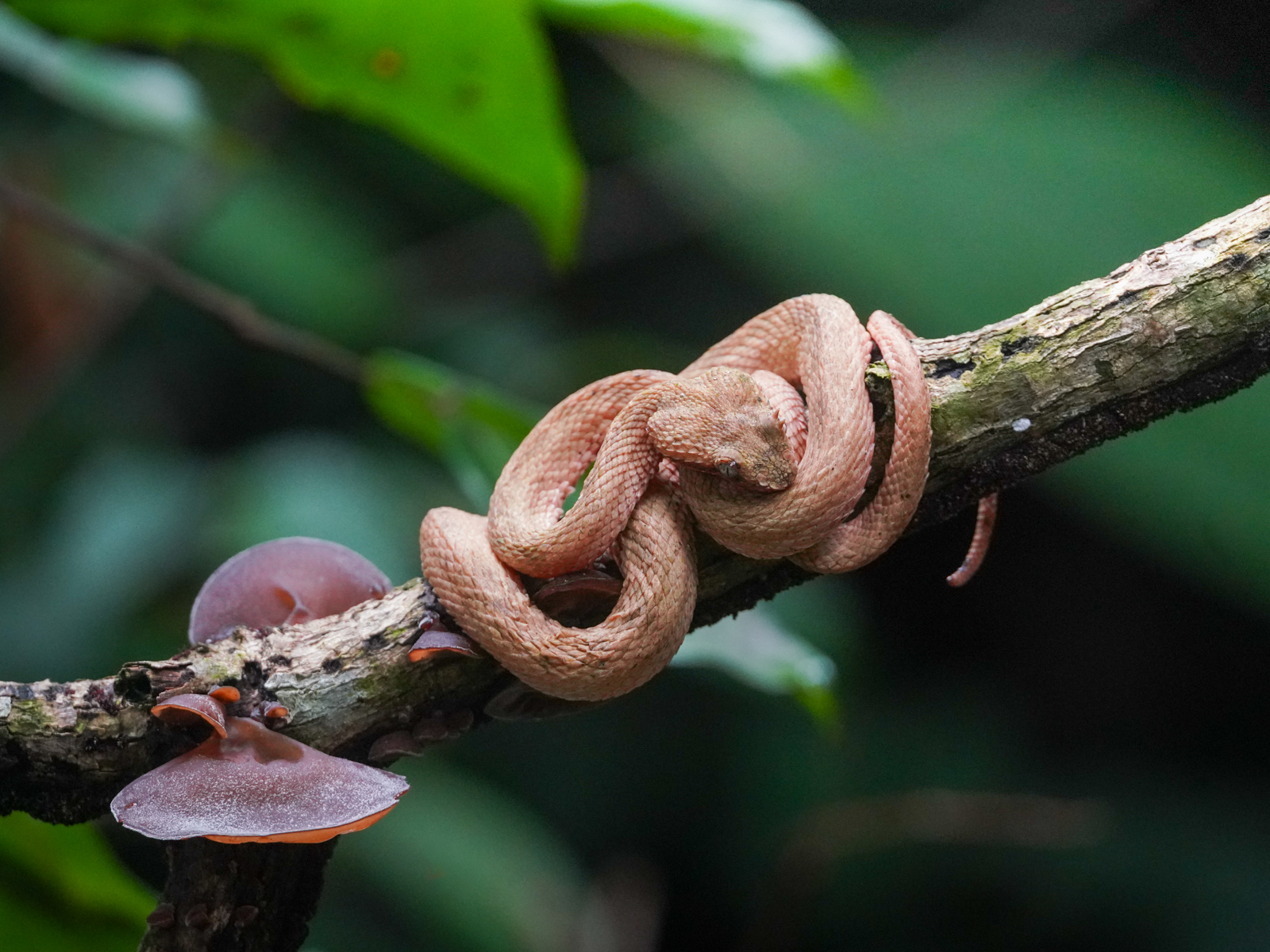
Eyelash Palm Pitviper © Jose Pablo Castillo

Birding at Cahuita © Jose Pablo Castillo
Day 7. Cariblue, Hotel Los Ríos
After breakfast we began our drive back north along the coast but it was not long before we made our first stop near Cahuita to marvel over the spectacle of raptor migration: a literal river of raptors was flowing overhead with thousands of Broad-winged Hawks, Mississippi Kites, Turkey Vultures and Swainson’s Hawks. We made another stop at an estuary called Estero Negro and saw Yellow-crowned Night-Heron, Little Blue Heron, Spotted and Least Sandpipers, Sanderling, Ruddy Turnstone, Black-bellied, Semipalmated and Collared Plovers and Royal Terns. Our next stop was at La Hoja Garden, a spot with the perfect combination of bird feeders and human feeders and the feeders were great as all three honeycreepers, Shining, Red-legged and Green, Golden-hooded and Scarlet-rumped Tanagers, Black-cowled Oriole, Russet-naped Wood-Rail, Collared Aracari, Montezuma and Chestnut-headed Oropendolas, Black-cheeked Woodpecker, Scaly-breasted Hummingbird, Long-billed Hermit, Bronze-tailed Plumeleteer and Long-billed Starthroat. After lunch we reached Hotel Los Ríos just as the rain set in, perfect timing for a short siesta.
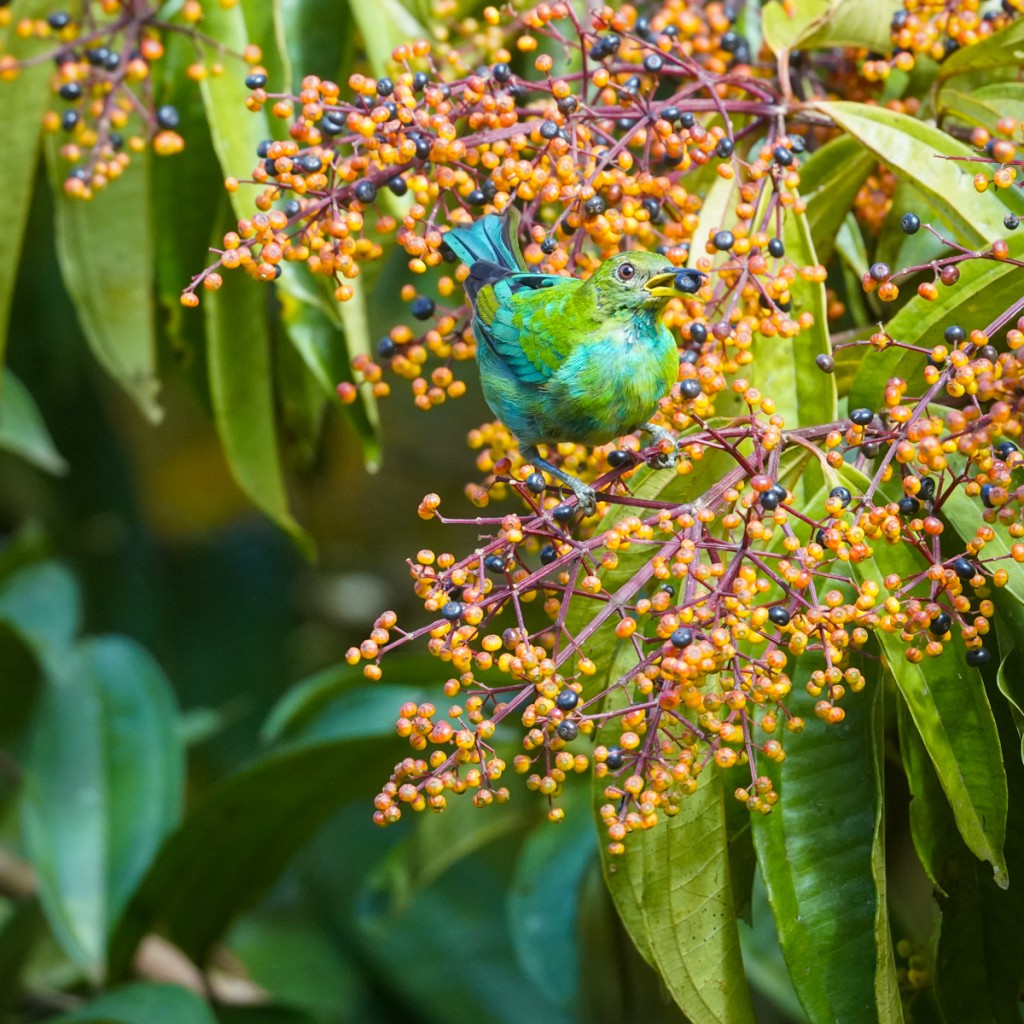
Green Honeycreeper ©Jose Pablo Castillo
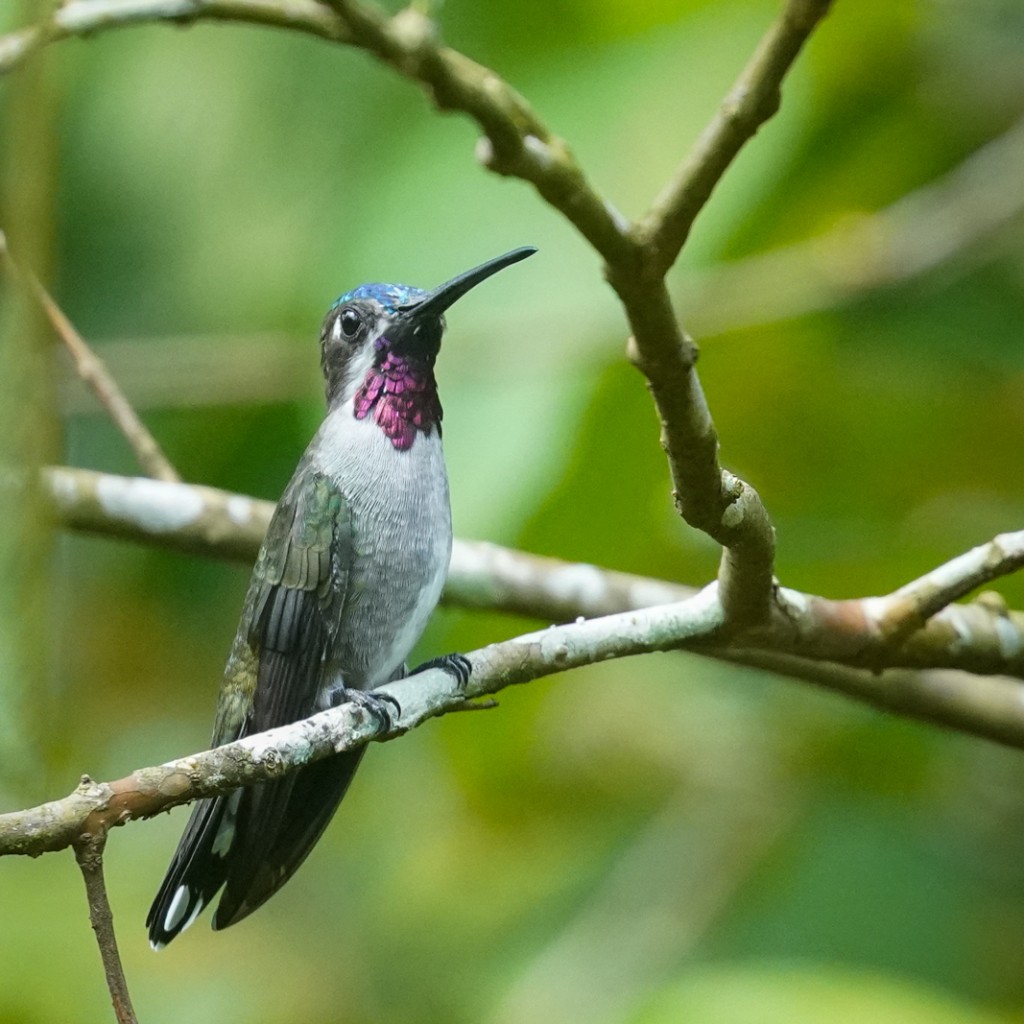
Long-billed Starthroat © Jose Pablo Castillo

Shining Honeycreeper © Jose Pablo Castillo

Brown-throated Three-toed Sloth
Day 8. Las Brisas Nature Reserve
Today we left the hotel early to visit Las Brisas Nature Reserve, located on the eastern slopes of Turrialba Volcano and overlooking the Caribbean lowlands. We arrived and enjoyed a diverse picnic breakfast, but it was difficult to concentrate on the food when there were so many birds around us! The number of Neotropical migrants was outstanding with dozens of Red-eyed Vireos, Chestnut-sided, Tennessee, Blackburnian and Canada Warblers moving about the trees as Tawny-crested, Emerald, Bay-headed, Golden-hooded, Scarlet-rumped and Carmiol’s Tanagers hit every fruiting Melastome bush around us. After birds and breakfast we walked along the trail entering the forest and saw Black-headed Tody-Flycatcher, White-ruffed Manakin, White-tipped Sicklebill, Snowcap, Green Shrike-Vireo and many interesting orchids and dragonflies.

Birding at Las Brisas © Jose Pablo Castillo
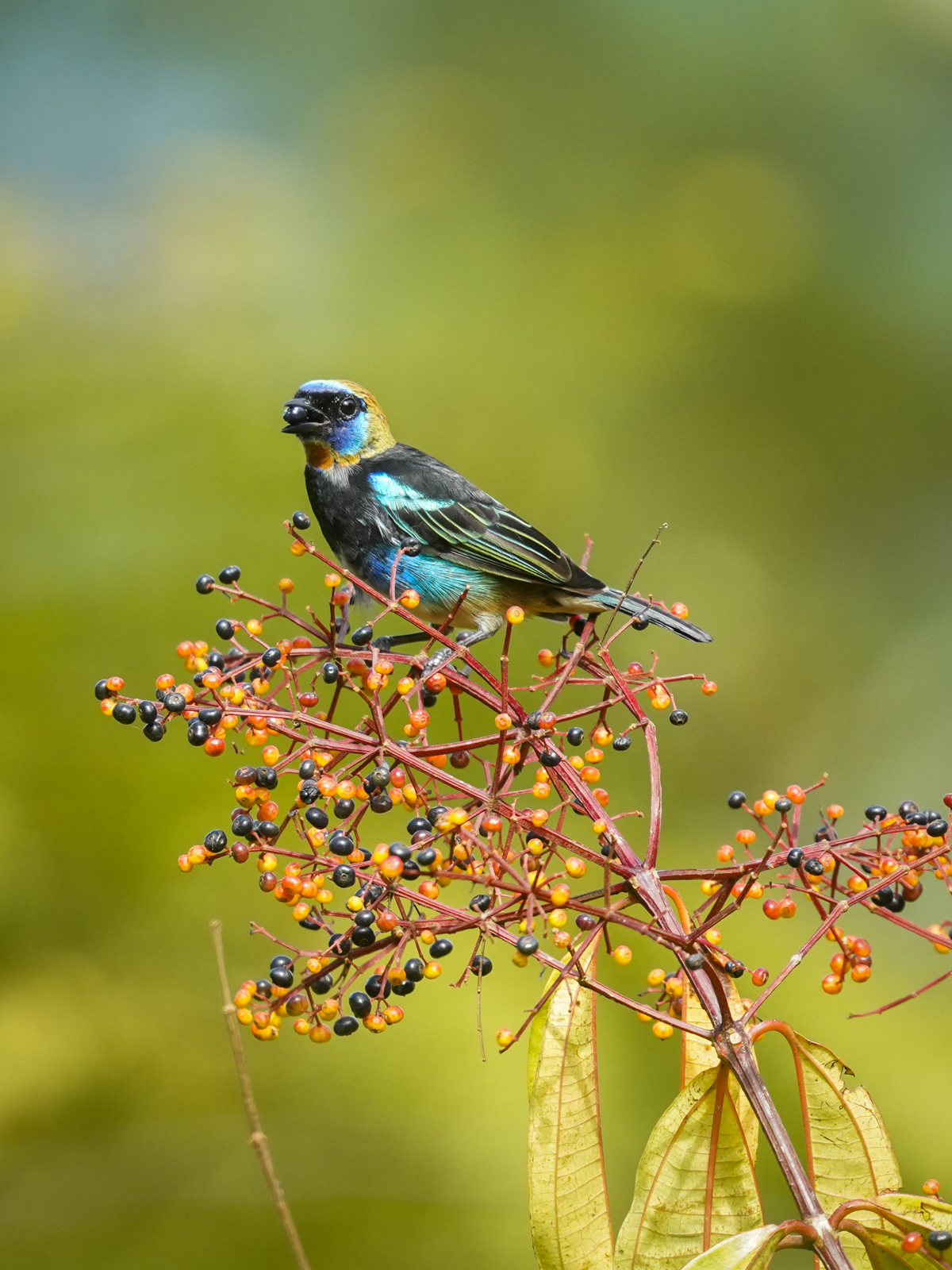
Golden-hooded Tanager © Jose Pablo Castillo
After our delicious lunch, catered to us by the ladies of the Women’s Association of La Esmeralda, we returned to our hotel for a siesta and some late afternoon birding on the hotel grounds. Behind the hotel are two rivers, the Guácimo and Guacimito, and the birding from the edges was good, with Ringed, Amazon and Green Kingfishers, Fasciated and Bare-throated Tiger-Herons, Yellow-crowned Night-Heron, Little-Blue Heron, Louisiana and Northern Waterthrushes and Black Phoebe. After dinner we went out for a night walk and spotted a Nine-banded Armadillo, Emerald Basilisk, Drab Tree-Frog, Cane Toad and the amazing Fleischman’s Glass-Frog.
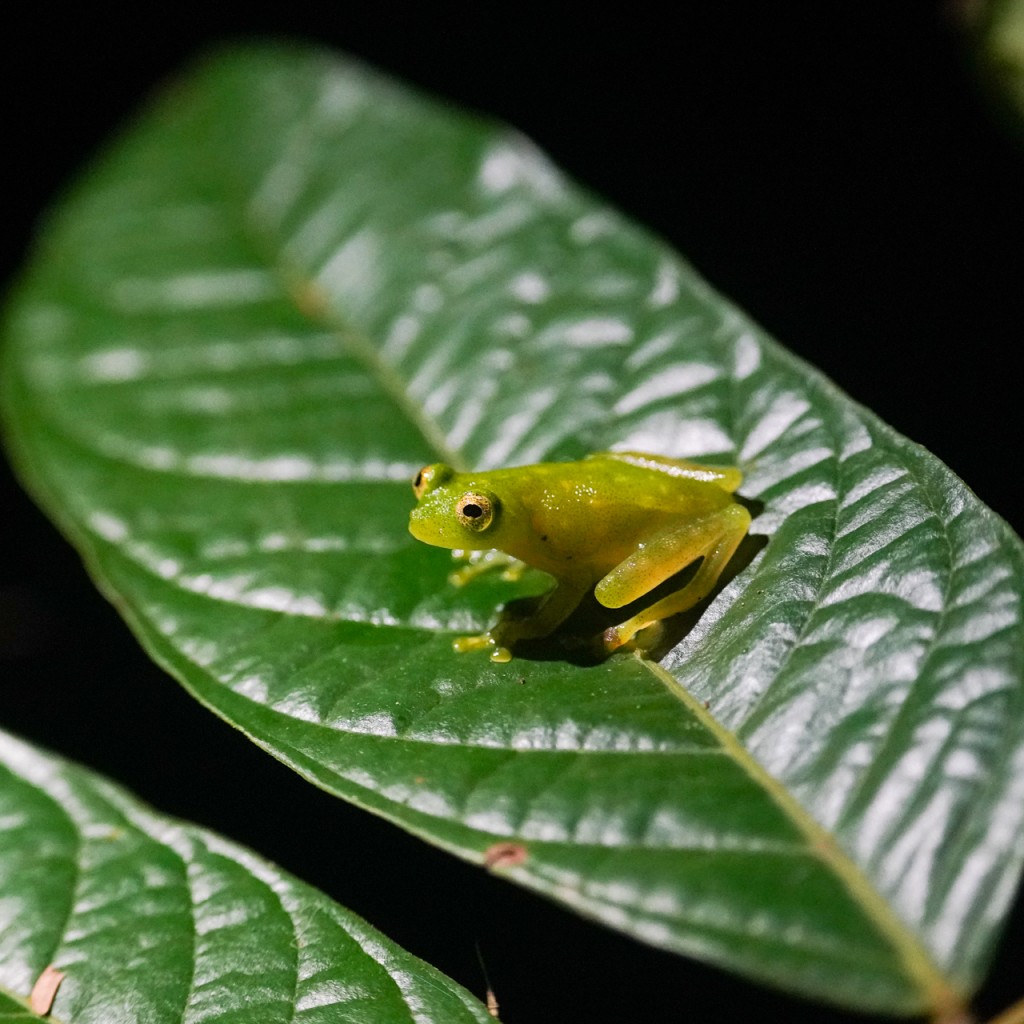
Fleischmann’s Glass Frog © Jose Pablo Castillo
Day 9. Hotel Los Ríos, Cinchona, Arenal Observatory Lodge
After breakfast we departed to our next destination and drove up the slopes of Poás Volcano to Mirador Cinchona to watch the bird feeders and have lunch, with an amazing view of the San Fernando Waterfall, and as we began climbing we spotted six Great Green Macaws perched on the roadside!. Here we saw Violet Sabrewing, Green-crowned Brilliant, White-bellied Mountain-Gem, Black-bellied Hummingbird, Green Hermit, Gray-breasted Wood-Wren, Chestnut-capped Brushfinch, Silver-throated Tanager and Crimson-collared Tanager. After lunch we began making our way to La Fortuna, making one stop at a small creek where we saw Torrent Tyrannulet and Sooty-faced Finch. The rest of our drive was in the rain, but when we reached the entrance to Arenal Observatory Lodge we spotted a Sunbittern just off the side of the road and gave us fantastic views from the bus.

Sunbittern © Jose Pablo Castillo
Day 10. Arenal Observatory Lodge
We started our day birding the incredible hotel grounds with many flowers and fruiting fig trees, all with a backdrop of the impressive cone of Arenal Volcano. Very soon we were seeing new birds left and right, Crested Guans, Scarlet-thighed Dacnis, Rufous-winged, Bay-headed, Golden-hooded and Emerald Tanagers, Keel-billed and Yellow-throated Toucans, Collared Aracaris, Gartered Trogon, White-collared Manakin, Crowned Woodnymph, Green Thorntail and Blue-throated Goldentail. We also encountered a mixed species flock with Russet Antshrike, Tropical Parula and White-throated Shrike-Tanager.
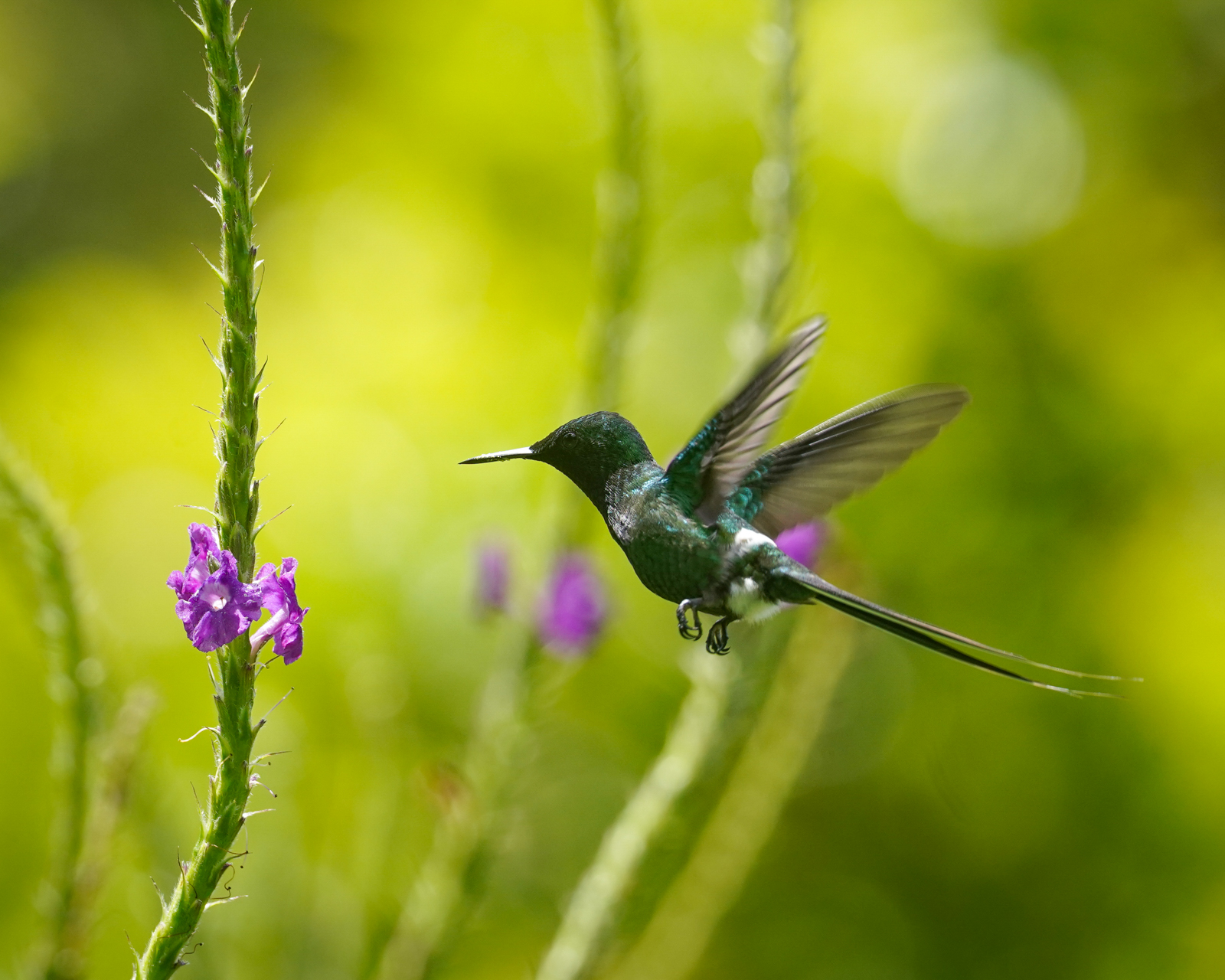
Green Thorntail © Jose Pablo Castillo
After breakfast we walked one of the trails behind the rooms and little did we know we were about to experience an amazing phenomenon which would make our morning go very quickly! At the entrance to the trail we encountered a mixed species flock which is where we tend to find most of the birds in the forest and they can sometimes be very fast moving and frustrating to see many of the species well. This flock, however, had two characteristics which improved our chances of seeing the birds: it was not moving very fast and it moved along the trail so we were able to watch it for a good two hours! We began with good views of the flock leaders, the noisy Carmiol’s Tanagers, as well as Russet Antshrike, Smoky-brown and Rufous-winged Woodpeckers, Spotted Woodcreeper, several species of tanagers including Black-and-yellow, Bay-headed and Emerald, Slaty-capped and Sulphur-rumped Flycatchers, increasingly better views of White-throated Shrike-Tanager, Slate-colored Grosbeak, Streak-crowned Antvireo, Slaty Antwren and Dusky Antbird. In the end this flock had over forty species of birds participating, a real treasure-trove!

Slate-colored Grosbeak © Jose Pable Castillo
After lunch the rain set in for the afternoon and we birded room the cover of the observation deck and despite the rain we had a chance to see some new birds and study others we had previously seen including Black-striped Sparrow, Yellow-crowned and Yellow-throated Euphonia, Great Curassow, Long-tailed Tyrant and we finished off watching a troop of Central American Spider-Monkeys feeding and moving through the trees right behind the lodge, swinging and jumping with amazing agility.
After dinner we went for a night walk and first thing we saw was a Spectacled Owl which, despite its size, proved to be tricky to spot in the canopy, however our thermal camera helped us reveal the location. At the frog pond we found a Northern Cat-eyed Snake, Brilliant Forest-Frog, Savage’s Thin-toed Frog, Harlequin Tree Frog and the iconic Red-eyed Leaf-Frog.
Day 11. Arenal Observatory Lodge, San Luis Adventure Park bird feeders
Today we started our day watching the spider-monkeys having their breakfast before heading out to the forest to feed for the day and we had a good review of the common birds we had been seeing the last couple of days. After breakfast we drove back up the mountains and made a stop at the San Luis Adventure Park to watch the bird feeders and we enjoyed close views of Tawny-capped Euphonia, Silver-throated Tanager, Emerald Tanager, Black-cheeked Woodpecker, Scarlet-thighed Dacnis and Black-and-yellow Tanager.
After lunch we arrived at Hotel Robledal and did a bit of birding on the grounds and we found Cinnamon Hummingbird, Hoffmann’s Woodpecker, Inca Dove, Spot-breasted Oriole and a Lineated Woodpecker. Later we finished off with our farewell dinner, reminiscing over our favorite moments and species and said hasta pronto!
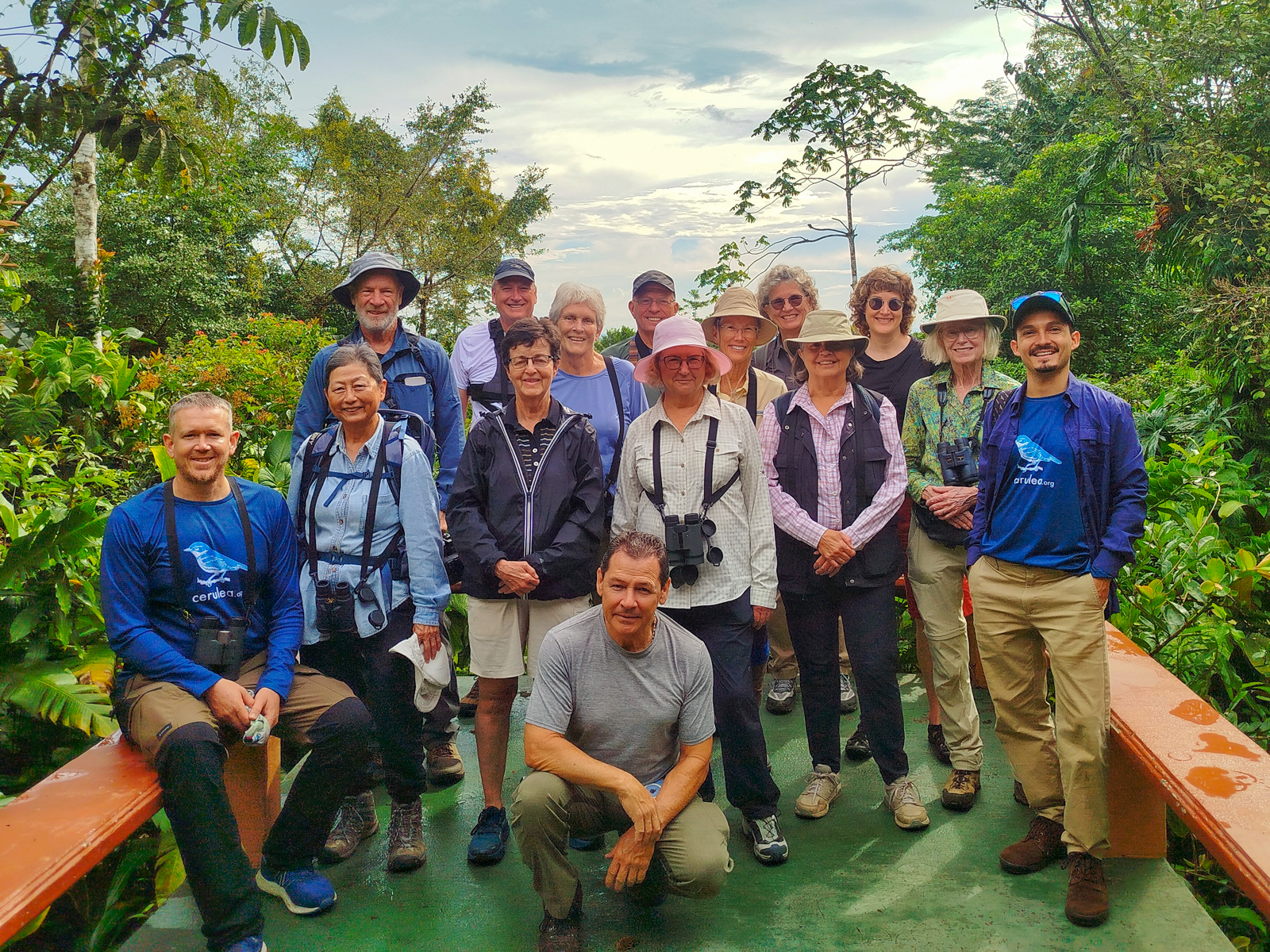
Our group




